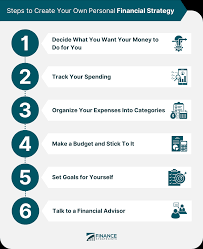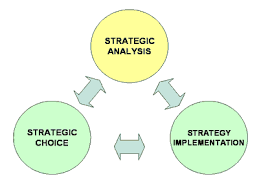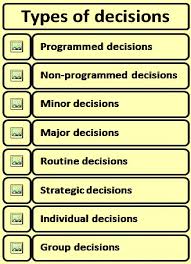Unstructured Decision Making: Embracing the Power of Intuition
In a world that values data-driven and analytical decision-making processes, unstructured decision making often takes a backseat. However, there is great value in embracing the power of intuition and allowing it to guide our choices. Unstructured decision making refers to the process of relying on instincts, experiences, and emotions rather than strictly following predefined rules or analysis.
While structured decision-making methods have their merits, they can sometimes limit our ability to see beyond the numbers or predetermined frameworks. Unstructured decision making, on the other hand, encourages us to tap into our innate wisdom and consider factors that may not be quantifiable or easily measured.
One of the key advantages of unstructured decision making is its ability to foster creativity and innovation. By allowing ourselves to think outside the box and trust our intuition, we open up new possibilities and approaches that may not have been considered otherwise. This can be particularly valuable in situations where traditional methods fail to provide satisfactory solutions or fail to capture the complexity of a problem.
Unstructured decision making also acknowledges that not all decisions can be neatly categorized into clear-cut choices. Life is often filled with ambiguity, uncertainty, and incomplete information. In such cases, relying solely on structured approaches may lead to analysis paralysis or an inability to make progress. By embracing unstructured decision making, we give ourselves permission to navigate through these gray areas with confidence.
Furthermore, unstructured decision making recognizes the importance of emotional intelligence in our choices. Our emotions carry valuable insights that can guide us towards decisions aligned with our values and personal growth. Ignoring these emotional cues can lead to regret or a sense of disconnection from our true selves.
Of course, it is important to strike a balance between structured and unstructured decision-making methods. There are situations where a more systematic approach is necessary for complex problem-solving or risk assessment. The key lies in recognizing when each approach is most appropriate and combining them effectively.
To enhance our unstructured decision-making abilities, it is crucial to cultivate self-awareness and mindfulness. Taking the time to reflect on our experiences, values, and emotions can help us better understand ourselves and tap into our intuition. Additionally, seeking diverse perspectives and engaging in open dialogue can broaden our horizons and challenge our preconceived notions.
In conclusion, unstructured decision making offers a powerful alternative to rigid analytical approaches. By embracing intuition, creativity, and emotional intelligence, we can make more holistic choices that align with our values and lead to personal growth. While structured methods have their place, let us not overlook the wisdom that lies within us when making important decisions.
Frequently Asked Questions: Understanding Unstructured Decision Making
- What is unstructured decision making?
- How does unstructured decision making differ from structured decision making?
- What are the advantages and disadvantages of unstructured decision making?
- What strategies can be used to make effective unstructured decisions?
- How can organizations best utilize unstructured decision making?
- What tools are available to support unstructured decision making?
What is unstructured decision making?
Unstructured decision making refers to the process of making choices without relying on predefined rules, formal analysis, or structured frameworks. Instead, it involves using intuition, personal experiences, emotions, and subjective judgment to arrive at a decision. It is a more flexible and open approach that acknowledges the complexity and ambiguity often present in decision-making situations.
In unstructured decision making, individuals rely on their instincts and gut feelings to guide their choices. They may consider factors that are difficult to quantify or measure objectively, such as personal values, social dynamics, or long-term implications. This approach allows for a more holistic consideration of the situation and encourages creative thinking.
Unlike structured decision making that follows a step-by-step process with clearly defined criteria and guidelines, unstructured decision making does not adhere to a specific framework. It recognizes that not all decisions can fit into neat categories or be solved through analytical methods alone.
Unstructured decision making is particularly valuable in situations where there is incomplete information or when traditional methods fail to provide satisfactory solutions. It encourages individuals to think outside the box and explore alternative perspectives and possibilities. By embracing intuition and emotional intelligence, unstructured decision making can lead to innovative solutions and personal growth.
However, it is important to note that unstructured decision making does not dismiss the importance of analysis or critical thinking altogether. Rather, it suggests that there are times when relying solely on structured approaches may limit our ability to consider all relevant factors or stifle creativity.
Overall, unstructured decision making offers an alternative approach that recognizes the value of intuition, experience, emotions, and subjective judgment in navigating complex decisions. By embracing this method alongside structured approaches when appropriate, individuals can make more well-rounded choices that align with their values and lead to better outcomes.
How does unstructured decision making differ from structured decision making?
Unstructured decision making and structured decision making are two contrasting approaches to making choices. Here are the key differences between the two:
- Approach: Structured decision making follows a systematic and logical process, relying on data, analysis, and predefined rules or frameworks. Unstructured decision making, on the other hand, emphasizes intuition, experiences, emotions, and subjective factors.
- Flexibility: Structured decision making tends to be rigid and rule-based, following a predetermined set of steps or criteria. Unstructured decision making allows for more flexibility and adaptability to unique situations or complex problems that may not fit neatly into predefined categories.
- Information Processing: Structured decision making relies heavily on gathering and analyzing relevant data before reaching a conclusion. It emphasizes quantitative information and objective analysis. Unstructured decision making takes into account both quantitative and qualitative information, including personal experiences, emotions, values, opinions, and tacit knowledge.
- Complexity: Structured decision making is often used when dealing with complex problems that require thorough analysis and consideration of multiple variables. It aims to minimize uncertainty by breaking down the problem into manageable parts. Unstructured decision making is more suitable for situations where there is ambiguity or incomplete information that cannot be easily quantified or analyzed.
- Time Frame: Structured decision-making processes are typically more time-consuming due to the need for data collection, analysis, and adherence to predefined frameworks. Unstructured decision-making processes can be quicker as they rely on intuition and personal judgment.
- Creativity and Innovation: Structured decision making may limit creativity as it follows predetermined rules or guidelines. Unstructured decision making encourages creative thinking by allowing individuals to think outside the box and explore unconventional solutions.
- Risk Management: Structured decision-making methods often involve risk assessment based on objective data analysis. Unstructured decision-making methods may involve a higher level of risk-taking as they rely on subjective factors such as intuition or emotions.
It’s important to note that both structured and unstructured decision-making approaches have their strengths and weaknesses. The choice between the two depends on the nature of the problem, available information, time constraints, and personal preferences. A balanced approach that combines elements from both methods can often lead to more comprehensive and effective decision making.
What are the advantages and disadvantages of unstructured decision making?
Advantages of Unstructured Decision Making:
Creativity and Innovation: Unstructured decision making encourages thinking outside the box, allowing for creative and innovative solutions that may not have been considered through structured approaches.
Flexibility: Unstructured decision making provides flexibility to adapt to complex or ambiguous situations where predefined rules or analysis may not be sufficient.
Speed: In some cases, unstructured decision making can expedite the decision-making process by relying on intuition and experience rather than extensive data analysis or lengthy deliberation.
Emotional Intelligence: Unstructured decision making recognizes the importance of emotions in decision-making processes, allowing individuals to consider their feelings and values as guiding factors.
Holistic Perspective: It enables a more holistic perspective by considering a wide range of factors beyond quantitative data, such as personal experiences, relationships, and intangible qualities.
Disadvantages of Unstructured Decision Making:
Subjectivity: Unstructured decision making heavily relies on individual judgment and personal biases, which can lead to inconsistent outcomes or decisions that are influenced by emotions rather than objective criteria.
Lack of Consistency: Without clear guidelines or predefined frameworks, unstructured decision making can result in inconsistent decisions across different contexts or individuals.
Risk of Overlooking Important Factors: The intuitive nature of unstructured decision making may lead to overlooking critical information or neglecting certain aspects that should be considered for a well-rounded decision.
Limited Applicability: While unstructured decision making can be effective in certain situations, it might not be suitable for complex problems requiring systematic analysis, risk assessment, or logical reasoning.
Difficulty in Evaluation: The subjective nature of unstructured decisions makes it challenging to evaluate their effectiveness objectively or measure their success against predetermined criteria.
It is important to note that the advantages and disadvantages mentioned above are not absolute but rather general observations. The suitability of unstructured decision making depends on the context, nature of the decision, and individual preferences. A balanced approach that combines structured and unstructured methods can often yield the best outcomes.
What strategies can be used to make effective unstructured decisions?
When it comes to making effective unstructured decisions, there are several strategies that can be employed to enhance the process. Here are a few key strategies to consider:
- Trust your intuition: Intuition is a powerful tool in unstructured decision making. Pay attention to your gut feelings and instincts. Allow yourself to listen to that inner voice and trust the insights it provides. This can be particularly valuable when faced with complex or ambiguous situations where there may not be clear-cut answers.
- Seek diverse perspectives: Engage in conversations with others who have different viewpoints and experiences. By seeking out diverse perspectives, you can gain new insights and challenge your own biases or assumptions. This can help you expand your thinking and consider alternative possibilities that you may not have otherwise considered.
- Reflect on past experiences: Take the time to reflect on past experiences and decisions you have made. Consider what worked well, what didn’t, and what lessons you learned along the way. This reflection can provide valuable wisdom that can guide your current decision-making process.
- Embrace creativity: Unstructured decision making often involves thinking outside the box and embracing creativity. Allow yourself to explore unconventional ideas, brainstorm freely, and consider innovative approaches that may not fit within traditional frameworks or norms.
- Practice mindfulness: Cultivating mindfulness can help you become more aware of your thoughts, emotions, and biases in the decision-making process. By staying present in the moment, you can make decisions that are aligned with your values and avoid getting caught up in distractions or external pressures.
- Consider long-term implications: Unstructured decision making encourages looking beyond immediate outcomes and considering the long-term implications of choices. Think about how a decision aligns with your goals, values, and aspirations for the future.
- Embrace uncertainty: Unstructured decision making often involves navigating through ambiguity and uncertainty. Instead of seeking absolute certainty, embrace the fact that some level of uncertainty will always exist. Focus on gathering enough information to make an informed decision, but also be willing to take calculated risks and adapt as needed.
Remember that effective unstructured decision making is a skill that can be developed over time. By incorporating these strategies into your decision-making process, you can enhance your ability to make thoughtful and holistic choices that align with your unique circumstances and aspirations.
How can organizations best utilize unstructured decision making?
Organizations can best utilize unstructured decision making by incorporating it as a complementary approach alongside structured decision-making methods. Here are some strategies to effectively leverage unstructured decision making within an organizational context:
- Recognize the value of intuition: Encourage employees and leaders to trust their instincts and tap into their intuition when making decisions. Provide opportunities for individuals to develop their intuitive skills through training, workshops, or coaching.
- Foster a culture of psychological safety: Create an environment where employees feel comfortable expressing their ideas, thoughts, and intuitions without fear of judgment or negative consequences. Encourage open dialogue and diverse perspectives to stimulate creative thinking.
- Encourage experimentation and risk-taking: Unstructured decision making often involves taking calculated risks and exploring unconventional approaches. Encourage employees to experiment, learn from failures, and embrace innovative ideas that may challenge the status quo.
- Promote cross-functional collaboration: Unstructured decision making benefits from diverse perspectives and expertise. Foster collaboration between different departments or teams to facilitate knowledge sharing, brainstorming sessions, and collective problem-solving.
- Incorporate qualitative data analysis: While structured decision-making relies heavily on quantitative data, unstructured decision making acknowledges the importance of qualitative data as well. Encourage the collection and analysis of subjective information such as customer feedback, employee experiences, market trends, or cultural insights.
- Develop reflective practices: Provide opportunities for individuals and teams to reflect on past decisions and learn from their experiences. This can be done through post-decision reviews or debriefings where participants share insights gained from both successful and unsuccessful outcomes.
- Balance with structured approaches: Recognize that not all decisions can be made solely through unstructured methods. It is important to strike a balance between structured and unstructured approaches based on the nature of the decision at hand. Evaluate the level of complexity, available data, time constraints, and potential risks when determining which approach is most appropriate.
- Encourage continuous learning: Unstructured decision making requires ongoing learning and development. Encourage employees to stay updated on industry trends, explore new perspectives, and engage in professional development activities that enhance their decision-making skills.
By integrating unstructured decision making into the organizational culture and decision-making processes, organizations can tap into the collective wisdom of their employees, foster innovation, and make more holistic choices that align with their values and goals.
What tools are available to support unstructured decision making?
Several tools and techniques can support unstructured decision making by facilitating the exploration of diverse perspectives, fostering creativity, and enhancing intuitive thinking. Here are a few examples:
- Mind Mapping: Mind mapping is a visual tool that helps organize thoughts and ideas in a non-linear way. It allows for free-flowing associations and connections, enabling you to explore different possibilities and uncover new insights.
- Brainstorming: Brainstorming sessions encourage the generation of ideas without judgment or criticism. This technique promotes creativity by allowing individuals or groups to freely express their thoughts, leading to innovative solutions.
- Intuition Exercises: Intuition exercises can help develop and strengthen your intuitive abilities. These exercises often involve mindfulness practices, such as meditation or journaling, which allow you to tap into your subconscious mind and access deeper insights.
- Scenario Planning: Scenario planning involves envisioning multiple future scenarios based on different assumptions or variables. By considering various potential outcomes, you can better prepare for uncertainties and make more flexible decisions.
- Decision Trees: While decision trees are typically associated with structured decision making, they can also be adapted for unstructured decisions. Decision trees visually represent different options and potential outcomes, helping you consider both logical factors and intuitive judgments.
- Role-Playing or Simulations: Role-playing exercises or simulations provide an opportunity to explore potential decision outcomes in a safe environment. By assuming different roles or testing scenarios virtually, you can gain insights into the consequences of various choices.
- Peer Consultation: Seeking input from trusted peers or mentors who have diverse perspectives can offer valuable insights during unstructured decision making processes. Engaging in open discussions with others allows for the exploration of multiple viewpoints and challenges biases.
- Reflective Journaling: Maintaining a reflective journal helps capture your thoughts, emotions, and experiences related to decision making over time. It encourages self-reflection and provides an opportunity to identify patterns or recurring themes that may inform future choices.
Remember, these tools are not meant to replace intuition or subjective judgment but rather to complement and enhance the decision-making process. The key is to find the tools that resonate with you and align with your decision-making style, allowing you to embrace unstructured approaches with confidence.




